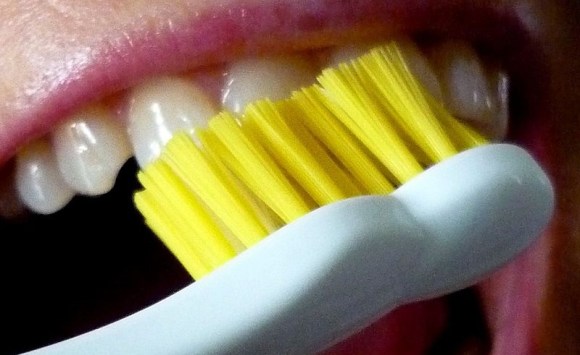
That might not sound like a shocking headline for those of us whom have been taught to brush right after every meal from an early age. But recent reports from the past decade have been suggesting something different.
Articles from the Mayo Clinic, Colgate, and New York Times among others have been advocating waiting 30 to 60 minutes after eating to brush. Apparently the delayed brushing movement has gotten so strong that parents Japan are beginning to complain to schools making children brush their teeth right after lunch time.
So the Japan Society of Pediatric Dentistry (JSPD) issued a statement telling everyone to not believe the hype and that it’s actually in your best interest to brush right away.
■ Research
According to the JSPD this notion came from a study that tested the effects of acidic food on dentin, a substance in our teeth. They didn’t say which study it was specifically, but other reports link back to an experiment conducted by Georg August University in Germany in 2003.
In the study scientists tested samples of dentin that have been submerged in acidic Sprite Light for 90 seconds. They then embedded the samples in people’s mouths and had the subjects brush their teeth at different times from 10 to 60 minutes afterward.
After 21 days of this, the dentin samples of people who brushed their teeth in less than 30 minutes from Sprite contact experienced significant erosion because of the added friction from the brush. Therefore it’s advisable to wait about half an hour after eating to brush, right?
Wrong, according to the JSPD.
■ Reality
This is not to say there’s anything wrong with the Georg August University’s findings. It’s just that it doesn’t really apply to regular life. First, the JSPD points out that the study was testing the effects of acid directly on dentin, which is the middle layer of a person’s tooth and protected by the enamel and saliva.
Of course enamel is not impervious to acid either and the neutralizing effects of saliva are not perfect, but they do act as a sufficient defense against reasonably acidic foods and drinks. So even with the combined effect of scrubbing with a brush you probably won’t get much penetration.
Next, there’s the issue of “erosion” as mentioned in the study. This is different from the type of acid attack that causes cavities. As previously mentioned taking a swig of Sprite will splash a layer of acid onto your pearly-whites but must also contend with your body’s natural defenses. These not only weaken the acid in the food but also help withstand the physical force of brushing.
On the other hand, the plaque that builds up from food particles poses a much greater threat. Plaque contains decaying carbohydrates which in turn contain bacteria that produce acid. This is like having a tiny acid factory in direct contact with your teeth and protected from the outside by plaque.
While both situations are harmful to your teeth, the plaque and its acid-making bacteria are by far the greater threat. Following that logic, the best way to deal with plaque is to brush food matter away as soon as possible after eating. Waiting only gives plaque more opportunity to form.
The JSPD are confident in their advice but also vow to conduct further studies on the matter. In the meantime, they urge everyone young and old, to not hesitate to brush even after consuming acidic drinks or foods.
However, if you have a hard time trusting any of these research institutes, then you can always do what I did and get an entire mouthful of gold teeth implanted. It’s remarkably liberating. Not just with dental hygiene either, my social calendar has been free and clear for months.
Source: Japanese Society of Pediatric Dentistry (Japanese), NCBI, Mayo Clinic, The New York Times, Colgate Oral and Dental Health Resource Center (English)
Top Image: Wikipedia – Certo Xornal (Cropped by RocketNews24)
Inset Images: RocketNews24